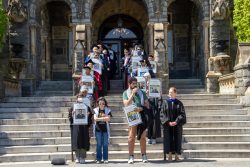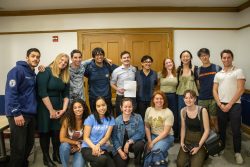After Loyola University of Chicago announced Georgetown’s special assistant to the president, Michael Garanzini, S.J., would be their next president, talk emerged again that Georgetown administrators were leaving Georgetown while they could still find jobs elsewhere. Administrators have been compared to rats fleeing the ship.
When John J. DeGioia was chosen Georgetown’s president instead of a Jesuit, once again people started talking about Georgetown’s imminent decline.
Certainly Georgetown has seen a fast turnover in the last few years in terms of its high level administrators. The list of deans reads like a Georgetown who’s who. Almost all have retired or used their positions at Georgetown to gain high level positions at other prestigious schools around the country. Contrary to the image of rats fleeing the ship, these administrators have, presumably, been able to use their service to Georgetown to gain respect and notice from their peers.
Georgetown is a top school in almost every measure, but it hasn’t been a top school all that long. If degrees had market value, investing in a 1950s Georgetown education would have been a smart move.
Not many 12,000 student universities can support a $1 billion fundraising campaign. Not many universities of any size can triple the size of their endowments in much less than a decade. Not many schools can go from a good regional school to international recognition. The success of Georgetown’s third century campaign and the MedStar deal show just how strong Georgetown’s footing is.
Critics point to Georgetown’s drop from its peak in U.S. News and World Report’s yearly rankings as a sign of its impending collapse. If Georgetown appears weak it is only in relation to its “peer” institutions.
The fact that Georgetown is mentioned in the same breathe with Brown, Cornell and even Harvard is an accomplishment. These are schools with multi-billion dollar endowments and fundraising networks that have been around nearly as long as Georgetown. As old as this university is, fundraising on a massive scale is a relatively new phenomenon.
Money is what it takes to compete and, until very recently, it was the place where Georgetown was at a severe disadvantage. Research, endowments, student activities, faculty, financial aid and information technology are areas that distinguish great universities. Georgetown manages to compete in all of these areas despite what it lacks in resources.
Compared to many other schools in the top 25, Georgetown’s position is tenuous. But a tenuous position among the top 25 is better than the stable position of most schools.
Georgetown is in excellent shape for the future. The University has a solid new president, a major increase in student funding, a successful fundraising campaign, several new endowed professorships, extensive building projects and a host of new and capable administrators.
As far as student satisfaction and academic quality are concerned, the third century of Georgetown is looking good. That’s far more important than what U.S. News and World report has to say.




